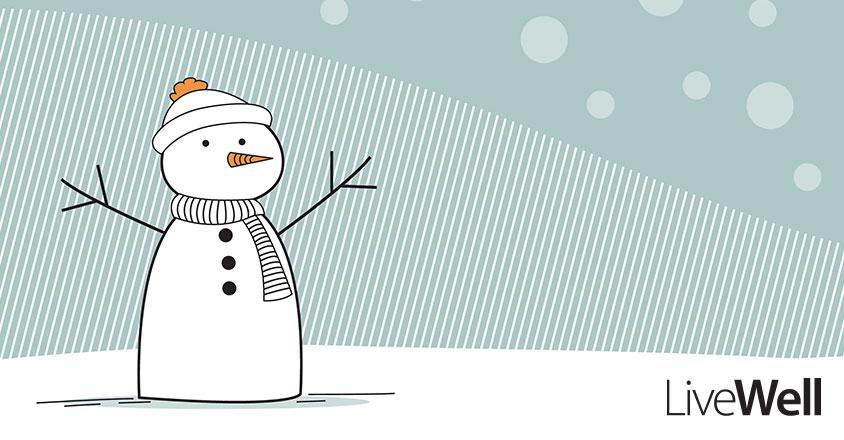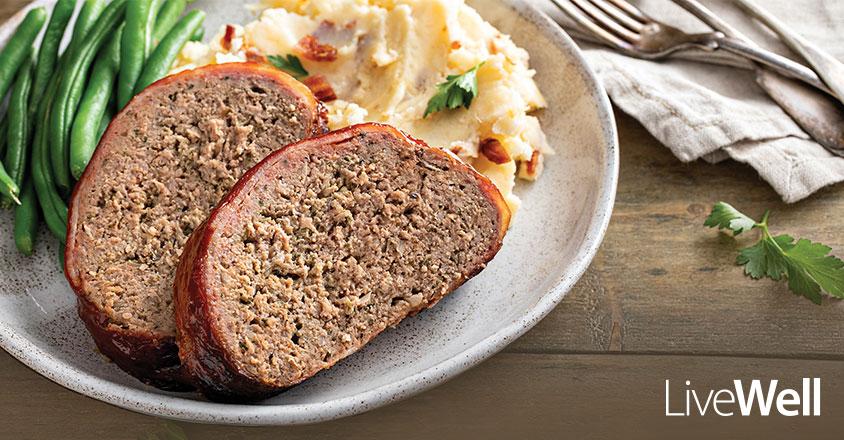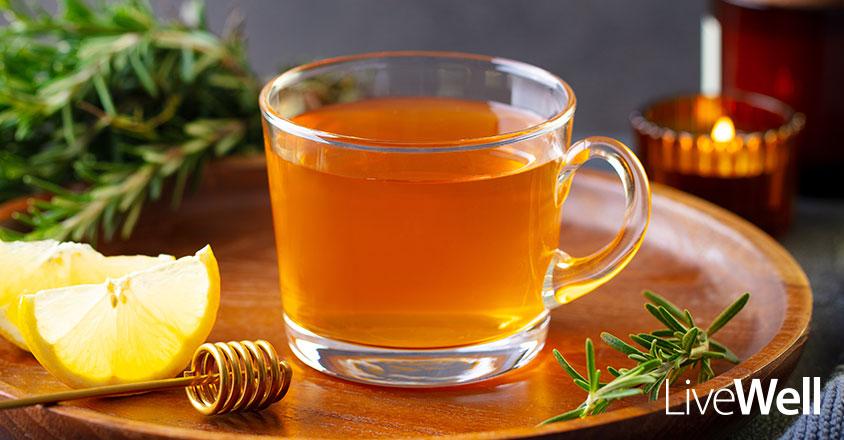The loneliness epidemic
‘Tis the winter season, which has a reputation for sadness given the shorter, darker days. It’s also after the holidays when post-holiday funks are legendary.
How do you know if you’re feeling alone or lonely? According to researchers, there’s a big difference.
In 2020, health consulting firm Cigna conducted an online survey of adults in the United States to explore the impact of loneliness. They found that 61% of Americans reported loneliness in 2019, up from 54% in 2018.
What did they want to know?
The researchers first wanted to determine if people were alone or lonely. They learned that:
Feeling alone occurs after situational variables, such as moving to a new location, losing a family member or friend and divorce. Even civic or religious holidays and events that bring people together, like a concert or the World Series, can cause people to feel disconnected when they are over.
The feelings lasted for a short time.
The feelings lessened as seasons and situations changed.
People who said they were lonely shared the following:
They reported little to no social support and infrequent meaningful social interactions.
They did not feel good about their relationships.
Their physical and mental health tended to be poor.
They lacked balance in their daily activities – doing too much or too little of anything (for example, sleep or work).
Figuring out if you are alone or lonely allows you to seek sources of support or otherwise make changes. Even if it does not feel comfortable, reach out.
The Centers for Disease Control (CDC) lists many health conditions made worse by ongoing loneliness, including heart disease, depression, cognitive decline and weakened immune systems.
Talk to your Primary Care Physician, who may have helpful resources.
You can also:
Find groups that share your interests.
Volunteer. (See the next paragraph for groups in need.)
Contact friends and family members regularly.
Eat a healthy diet and spend time in nature.
Young adults, mothers with young children, members of the LGBTQ+ community, immigrants and older people are all at increased risk for loneliness. The people in these groups need you and would most likely welcome you with open arms.
Genesis HealthCare System’s Health and Wellness content conveniently provides accurate and helpful information. Your health history and current health may impact suggestions provided through our Health and Wellness content. Although we hope this information is helpful, it is not a substitute for your doctor's medical advice. Before making any significant changes, please consult your doctor.

How do you know if you’re feeling alone or lonely? According to researchers, there’s a big difference.
Healthier homestyle meatloaf
Ingredients:
• 2 tablespoons fat-free milk
• ¼ cup ketchup
• 1 tablespoon Dijon mustard
• 1 lb. 93-97% lean ground beef
• 1 slice (1½ oz) whole grain bread
• 1 teaspoon dried basil
• 1/3 cup fresh parsley, chopped
• ¼ teaspoon pepper
• 2 egg whites
• ½ cup steamed broccoli florets, chopped
• ½ cup roasted red pepper, chopped
• ½ cup white onion, chopped
Nutritional information:
• Serving size: 2 slices
• Calories: 178
• Total fat: 4 g
• Saturated fat: 1 g
• Cholesterol: 47 mg
• Sodium: 189 mg
• Carbohydrates: 10 g
• Fiber: 1 g
• Protein: 20 g
Instructions:
Preheat oven to 350 degrees and coat a 9” x 5” loaf pan with cooking spray. In a large mixing bowl, combine milk, one tablespoon of ketchup, mustard and egg white. Add onion, red pepper and broccoli and set the mixture aside. In a food processor, pulse bread until completely crumbled. Add ground beef and breadcrumbs to the vegetable mixture. Add basil, parsley and black pepper. Mix all ingredients together by hand. Place meat mixture into loaf pan. Brush the remaining three tablespoons of ketchup over the top. Bake for one hour or until the thermometer inserted in the center of the pan registers 160 degrees. Let stand for 10 minutes. Cut meatloaf into 12 slices.
Find more recipes at genesishcs.org/eatwell.

Try this healthier version of a classic for your next family dinner.
To freeze or not to freeze?
Health and safety tips for frozen meat
As demand for protein – from beef to poultry – steadily increases, consumers stock up on their favorite cuts. Stashing it all in the freezer remains the go-to option, but what does this do to food long-term? You may have found yourself frantically searching the internet to see if your hamburger is still good after a month, or maybe even a year.
While freezing meat prevents unwanted bacteria, the process also impacts the meat in different areas. For example, one study posted on the National Library of Medicine website in 2021 claimed that freezing improves meat tenderness. However, it can have a negative impact on other qualities, including color and flavor. The intensity of changes to the meat mostly depends on the freezer’s size and distribution of ice crystals caused by the freezer’s temperature and the meat’s length of time in the freezer.
Unfortunately, researchers have not created a set of hard and fast rules about freezing and storing meat because all freezers are different, as well as the cuts of meat and other factors. However, a study on the National Library of Medicine website from 2013 recommends storing meat at 0° F. According to the USDA, food stays safe indefinitely in the freezer, but once removed and beginning to thaw, bacteria start to spread.
The USDA also gives suggestions for three methods for safely thawing food:
- In the refrigerator – this method takes the most time, so plan ahead. Ever forget to cook the thawed meat sitting in the fridge? The USDA says not to worry. It stays safe for an extra day or two.
- In cold water – while faster than the fridge method, this requires more supervision. Place the meat in an airtight, leak-proof container before giving it a cold-water bath.
- In the microwave – for safety’s sake, cook meat thawed in the microwave immediately.
Even after an extended stay in the freezer, frozen meat retains its nutrition and most of its flavor. So, check the freezer temperature, follow the USDA’s thawing suggestions and enjoy a delicious meal.
Go to genesishcs.org/yourhealth for more Wellness Resources.
Genesis HealthCare System’s Health and Wellness content conveniently provides accurate and helpful information. Your health history and current health may impact suggestions provided through our Health and Wellness content. Although we hope this information is helpful, it is not a substitute for your doctor's medical advice. Before making any significant changes, please consult your doctor.

Stashing protein in the freezer remains the go-to option, but what does this do to food long-term?
Blisters 101
Self-control + sanitary conditions
Question: What do spider bites, sunburns, chicken pox and tight shoes have in common?
Answer: They can all lead to blisters.
While blisters may begin as small, bothersome bubbles that form under the skin and fill with fluid, they can lead to infected areas needing medical attention. To help blisters heal quickly and without further issues, follow these guidelines:
1. Don’t pop it
That billowing booboo may call to you like a plump pimple, but white-knuckle-grip your self-control and don’t pop that blister. Picking, popping and probing blisters increases the chances of introducing bacteria to the wound, which can lead to festering infections.
2. Keep it clean
To keep bacteria at bay, wash the sore area with warm water and mild soap, then apply an antibacterial cream. Top it off with a fresh bandage or gauze, then give that blister time to
heal. Most blisters heal naturally within one to two weeks.
3. Know when to see a doctor
Generally, blisters don’t require a doctor’s expertise, but if a blister oozes with green or yellow pus, feels hot to the touch, or becomes more painful to the touch over the course of a few days, it may be infected. Don’t ignore an infected blister. A doctor can determine if your infection needs antibiotics for healing.
4. Change shoes/equipment
Blisters most often pop up due to excessive friction and pressure. So, stop the heavy, rubbing irritation that caused the blister in the first place. Sometimes that’s as simple as changing shoes, other times it means putting down the hand tools or baseball bat for a few days.
Are blisters preventable?
Research confirms that friction blisters form most easily on thick, stiff skin (like the soles of the feet) versus thinner skin. That’s why avid hikers, marathon runners and other athletes eagerly try all kinds of potential prevention tricks and tips to avoid blister pain.
“When it comes to blisters on the feet, I get asked about taping, specialty socks, foot powders, bandages and buying expensive shoes,” said Sierra Giesey, APRN-CNP. “I can’t guarantee any of those treatments will prevent the development of blisters. However, it may reduce the risk. I recommend finding out what works best on your skin through trial and error.”
Genesis HealthCare System’s Health and Wellness content conveniently provides accurate and helpful information. Your health history and current health may impact suggestions provided through our Health and Wellness content. Although we hope this information is helpful, it is not a substitute for your doctor's medical advice. Before making any significant changes, please consult your doctor.

To help blisters heal quickly and without further issues, follow these guidelines.
Four ways to give your brain a workout
The word crossword might conjure up an image of a grandfather sitting around the kitchen table with a cup of joe, a newspaper and a pencil. Does that crossword help keep his mind sharp? Well, that’s still up for debate. Although study results have been mixed, most researchers agree that our brain needs exercise like our body. Brain games can’t hurt us, and they’re less smelly than going to the gym. Here are five ways to give your brain a workout:
1. Keep learning new skills
Whether it’s a new type of brain game or learning how to quilt, the Synapse Project study published in Psychological Science found that learning new skills helped the memory of older adults.
2. Play around with number puzzles
A study published in 2019 in the International Journal of Geriatric Psychiatry found that number puzzles can help with things like attention, reasoning and memory, even in adults with dementia.
3. Try complex and challenging things – and keep practicing
According to Harvard Health, a complicated puzzle or challenging brain game fits the bill. You can also take a challenge you already enjoy and turn it up a notch. If you are a golfer, take a swing at a more challenging course. Knitter? Stitch a new pattern. Studies show these challenges will sharpen your thinking.
4. Tackle that word puzzle
According to the online PROTECT study published in the International Journal of Geriatric Psychiatry in 2018, older folks who completed a word puzzle a day showed better cognitive skills than those who did not often do puzzles.
5. Experiment with brain teasers – and involve your children
Brain games are not just for the elderly. A recent study published in the International Journal of Environmental and Science Education found that brain teasers can even help young kids increase their attention span.
You don’t need fancy gadgets or the latest app to keep your mind sharp. Weave some new and challenging puzzles, brain games and crosswords into your day-to-day life, and you might notice your memory or thinking skills improve. At the very least, you had some fun.

You don’t need fancy gadgets or the latest app to keep your mind sharp. Here are five ways to give your brain a workout.
Exercise your mind by reading
Taking care of your physical health is important, but so is caring for your brain. So, give your body a rest and work out your mind tonight. Lift a few words, run through paragraphs and stretch your way through a chapter. Reading can benefit your health in multiple ways.
Want to learn more? Take our quiz and start your workout without the smelly gym clothes.
Genesis HealthCare System’s Health and Wellness content conveniently provides accurate and helpful information. Your health history and current health may impact suggestions provided through our Health and Wellness content. Although we hope this information is helpful, it is not a substitute for your doctor's medical advice. Before making any significant changes, please consult your doctor.

Taking care of your physical health is important, but so is caring for your brain. Reading can benefit your health in multiple ways.
The perfect cup of tea
Preparing the perfect cup of tea can take practice. Especially because there are so many types of tea and ways to prepare it. Follow the steps below and enjoy.
Green Tea – Add a tea bag or leaves just as the water begins to boil. Steep for 3 minutes uncovered. Don’t add anything for a refreshing tea flavor.
Black Tea – Add a tea bag or leaves when the water arrives at a full boil. Steep for 5 minutes covered. Add a little honey, milk or lemon to taste.
Oolong Tea – Add a tea bag or leaves when the water arrives at a full boil. Steep for 3 minutes covered. Oolong is the perfect tea for adding a citrus flavor like lemon or orange.
White Tea – Add a tea bag or leaves when the water is just under a boil. Steep for 2 minutes uncovered. White tea is best when enjoyed plain. The addition of milk, sugar, lemon or any spice is disruptive to its delicate tea flavor.
Herbal Tea – Add a tea bag or leaves when the water arrives at a full boil. Herbal tea can steep forever unless it contains a tea listed above. Enjoy plain. Adding a little honey for root herbal teas can improve the taste but will add calories.
Tips: Use bottled, freshly drawn filtered water. If you use tap water, let it run for 10 seconds before use for fresher taste. Use one tea bag or one level teaspoon of loose tea per serving. Once the tea is ready, remove the bag or leaves to avoid excessive brewing that would cause a bitter taste.

Preparing the perfect cup of tea can take practice. Especially because there are so many types of tea and ways to prepare it.
The easiest way to show your vaccination records
Are you thinking about flying to your next vacation destination? Maybe you’re ready to go to a concert? As COVID-19 continues, many social situations require proof of a vaccine to participate.
With the MyChart app on your phone, you have quick access to your vaccination records, which takes away the risk of being denied access to an event or venue because you lost your vaccine card. MyChart even provides a QR code that you can download to prove your vaccination status without logging into the app.
To find your status within MyChart, log into the MyChart app, click “Menu,” and look for the COVID-19 virus icon.
MyChart signup
It’s quick and free to sign up for MyChart. In addition to using it to show your vaccination status, you can view test results, have a video visit with your provider, request medication refills and much more.
To get started today:
- Download the MyChart App from the Apple App Store or Google Play or go to mychart.genesishcs.org
- Click on “New user activation” and follow the easy instructions
Genesis HealthCare System’s Health and Wellness content conveniently provides accurate and helpful information. Your health history and current health may impact suggestions provided through our Health and Wellness content. Although we hope this information is helpful, it is not a substitute for your doctor's medical advice. Before making any significant changes, please consult your doctor.

As COVID-19 continues, many social situations require proof of a vaccine to participate.
Firepit safety
In the summer and fall, it is fun to have cookouts and make s’mores by a firepit.
Plus, the outdoors is a great place to hang out with friends and family.
What we never want to hear or think about is an accident happening with fire. It could happen to anyone, and we want to ensure everyone is safe while having fun.
To prevent a fire-related accident, the U.S. Fire Administration recommends the following tips for practicing fire safety outdoors:
Use chimneys, outdoor fireplaces and firepits at least 10 feet away from your home or anything that can burn.
Watch children closely when a firepit is in use.
Use a metal screen over wood-burning fires to keep sparks from floating out.
Put out fires before you go inside.
Keep matches and lighters out of children’s sight and reach.
The Chimney Safety Institute of America recommends putting out a fire by slowly moving your hose in a zigzag pattern. After wetting the firepit down, take a shovel and move around the wet embers so the water can soak in. Remember to extinguish the fire before going to bed or anytime you leave the fire unattended.
If there happens to be an accident and someone gets burned, immediately tend to that person. The American Red Cross advises removing any clothing or jewelry not stuck to the burn site, then cooling the burn as soon as possible with clean, cool or lukewarm water for 20 minutes, then leaving the burn uncovered.
If emergency medical service is called and delayed or transport is needed, cover the burn loosely with a clean, sterile dressing or plastic wrap if necessary. You should not use ice or ice water to help with a burn, as ice can cause more damage to the skin.
Some of us often hear the expression, “it’s not if, it’s when,” and we always want to be prepared. These tips are a precaution to prevent an accident from happening and ways to treat a burn until medical help arrives.
Call 911 if the accident is severe and you aren’t able to safely transport the victim to the hospital.
Genesis HealthCare System’s Health and Wellness content conveniently provides accurate and helpful information. Your health history and current health may impact suggestions provided through our Health and Wellness content. Although we hope this information is helpful, it is not a substitute for your doctor's medical advice. Before making any significant changes, please consult your doctor.

To prevent a fire-related accident, the U.S. Fire Administration recommends the following tips for practicing fire safety outdoors.
Exercises to combat chronic disease
Having a chronic disease can be a challenge. You may need to take medication or avoid certain foods and activities. However, chronic diseases don’t have to control your life. You can frequently slow the progression of a chronic disease and its effects by developing a wellness plan, which often involves exercise.
We know we often recommend exercise. However, there are several good reasons. Countless studies have shown regular exercise can help you in numerous ways.
The Centers for Disease Control and Prevention (CDC) states exercise can help:
Improve memory and the ability to work through problems.
Control weight.
Strengthen bones and muscles.
Make normal activities easier by increasing stamina, balance and flexibility.
Improve mental health by reducing stress.
Reduce the risk of certain diseases.
Improve sleep.
Even better, you will start to feel some benefits, like stress relief and improved sleep, soon after beginning to exercise.
With so many types of exercise, you should be able to find something you enjoy and is either free or low-cost.
If you are not sure where to start, the National Council on Aging recommends the following exercises for combating diabetes. However, these exercises are also great for people with several other chronic diseases. You can try:
Walking
Dancing
Yoga
Weight training
Tai chi
Swimming
The common factor in these activities is that they will get you up and moving. Most combine moderate muscle-building along with balance and flexibility.
Just as important as exercising is not overdoing it, especially if you’re just starting and have a chronic disease. Before beginning any exercise program, you should consult with your doctor for tips on which exercises you should try, how long you should exercise and other necessary precautions to take.
Genesis HealthCare System’s Health and Wellness content conveniently provides accurate and helpful information. Your health history and current health may impact suggestions provided through our Health and Wellness content. Although we hope this information is helpful, it is not a substitute for your doctor's medical advice. Before making any significant changes, please consult your doctor.

We know we often recommend exercise. However, there are several good reasons.